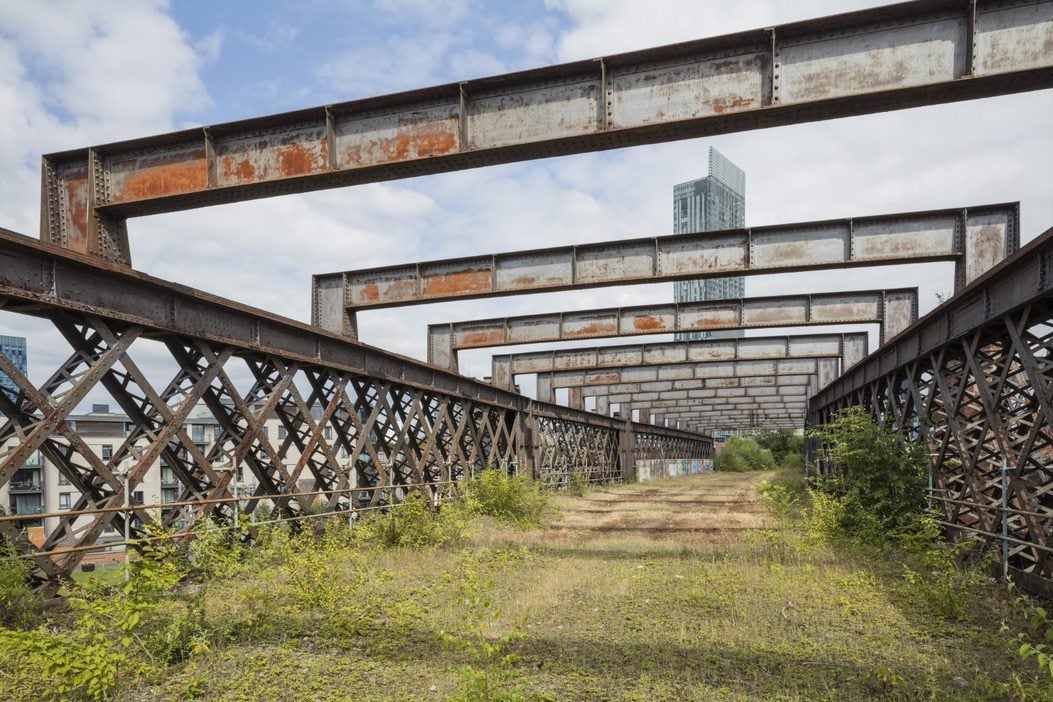Historic Manchester landmark set to transform into urban sky park
The viaduct was used to carry heavy rail traffic in and out of the former Manchester Central railway station.

Your support helps us to tell the story
From reproductive rights to climate change to Big Tech, The Independent is on the ground when the story is developing. Whether it's investigating the financials of Elon Musk's pro-Trump PAC or producing our latest documentary, 'The A Word', which shines a light on the American women fighting for reproductive rights, we know how important it is to parse out the facts from the messaging.
At such a critical moment in US history, we need reporters on the ground. Your donation allows us to keep sending journalists to speak to both sides of the story.
The Independent is trusted by Americans across the entire political spectrum. And unlike many other quality news outlets, we choose not to lock Americans out of our reporting and analysis with paywalls. We believe quality journalism should be available to everyone, paid for by those who can afford it.
Your support makes all the difference.Plans to transform Manchester’s Castlefield Viaduct into an elevated urban park are under way.
The National Trust is aiming to turn the imposing 330-metre steel Grade II Listed structure into a green oasis from July.
Built in 1892 and constructed by Heenan and Froude, the engineers who worked on the famous Blackpool Tower, the viaduct was used to carry heavy rail traffic in and out of the former Manchester Central railway station.
The station closed in 1969 and the viaduct has since stood disused with National Highways undertaking essential repairs and regular maintenance to keep it safe.
The pilot phase of the project will see a green space created to stretch halfway across the elevation of the viaduct. Trees, flowers and shrubs will be planted to soften the hulking, grey steel work of the industrial structure to help attract wildlife.
When it opens for 12 months in July, some 100 people will be able to visit free each day and as part of the experience can join a guided walk on the viaduct.
The public will have the opportunity to not only explore part of the structure but to find out more about its heritage, the city’s long relationship with plants and trees and have the opportunity to learn some urban gardening tips.
A section of the viaduct will be left untouched to provide a sense of how nature has reclaimed the spaces. It will also have several new features including installations, a community space to hold events and other native planting.
The National Trust also aims to capture visitors’ opinions to help determine the longer term future of the viaduct.
Hilary McGrady, the trust’s director-general, said: “This is a hugely significant moment in our plans for creating a unique green space to benefit the surrounding community and to bring more nature to people’s doorsteps. The project is also a fantastic way to celebrate our industrial heritage, bringing it to life for the 21st century.
“The pandemic showed us the importance of our local parks and gardens, but it also highlighted significant inequalities in access to green space in urban areas like Manchester.
“By working with others, we aim to increase access to parks and green spaces in, around, and near urban areas, so eventually everyone is in easy reach of quiet places for reflection with wide open skies.
“We hope that ‘greening’ the viaduct will become a stepping stone to other Manchester green spaces and nearby attractions, adding to the city’s vibrant, cultural offer.”
Costing £1.8 million, the pilot has been made possible thanks to funding raised by players of People’s Postcode Lottery, as well as public donations which will cover two thirds of the build costs.
The National Trust will also need to raise funds to support the future of Castlefield Viaduct. More details can be found by contacting giving@nationaltrust.org.uk